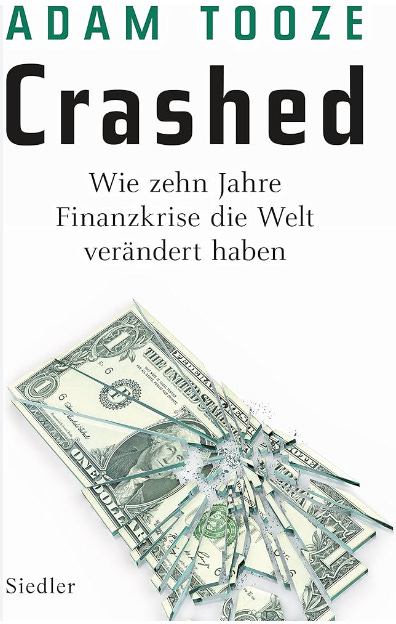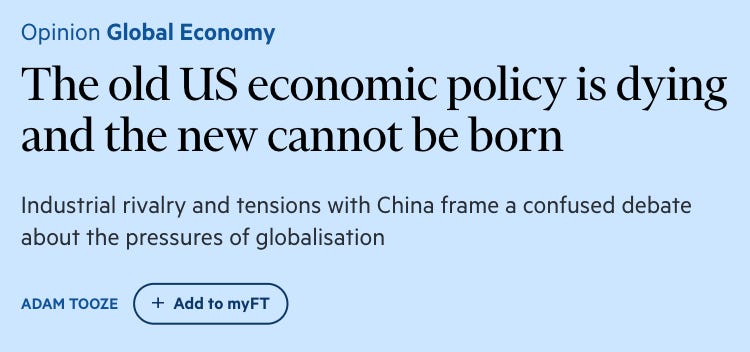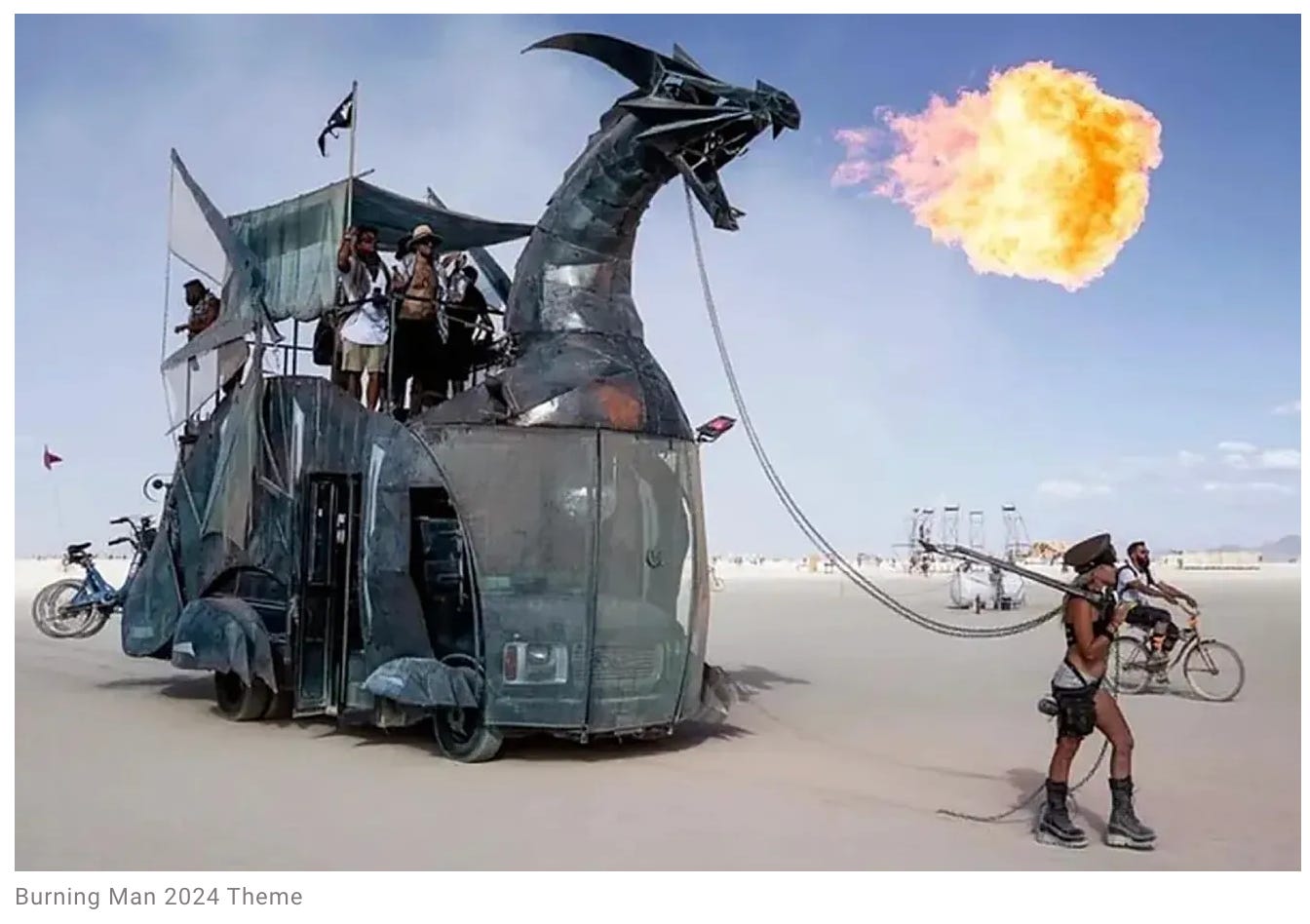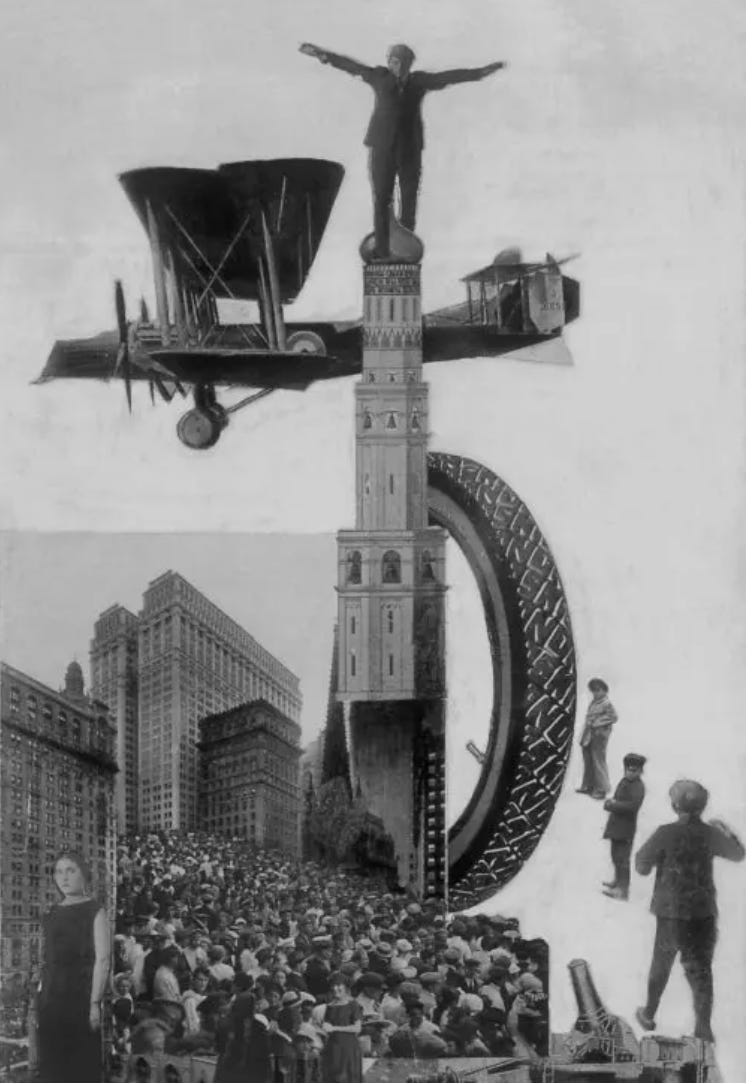Chartbook 325 Wrestling with transition thinking. Or on being "interregnumed" and how to resist it. (Hegemony notes 8)
Powerful ideological tropes shapes discourse, including your own, whether you want them to or not.
Transition thinking, stage theories of history, understanding change in terms of a logic of tension, crisis and resolution, these are habits of mind that are hard to break.
In the last few days I’ve been deeply preoccupied with Jean-Baptiste Fressoz’s brilliant More and More and More which exemplifies critique of ideology in this regard. It is a book I will be coming back to.
As I discussed in Chartbook 298, in the current moment Gramsci’s famous line about interregnum exerts something akin to a gravitational force:
The crisis consists precisely in the fact that the old is dying but the new cannot be born; in this interregnum a great variety of morbid symptoms appear.
As I argued in that note and in earlier comments on Finance-Fiction and the dollar system, a sense of unease and imbalance easily spawns the idea that this must resolve itself in some way. History will deliver that resolution. After a period of tension, the dissonance will resolve itself into new harmony.
The Gramsci quote does so much work because it highlights a tension, which is not resolving itself. But, at the same time, it situates that tension within a dramatic scenario of childbirth, in which the eventual resolution in the form of “the new” is promised. And that promise is reinforced by reference to the current period as an inter-regnum i.e. a period between two separate hegemonies. It is only a matter of time before the new regnum arrives. Otherwise, we would simply have to call this the end of hegemony.
As a habit of thought, you might call this a discursive “tell”. It is an involuntary marker of anxiety coupled with an underlying assumption about eventual resolution.
One moment when I began to think about these habits of mind, came in 2018 with the publication of Crashed. Crashed is a book whose theme might be described as the strange resilience of the dollar system. And yet this is the cover that the German edition turned up with.
The point of the book was certainly not that the dollar system was smashed, rather the opposite. But in the era of Trump, if you gave a German production team a book about the financial crisis of 2008, this is what they put on the cover, whether it made sense or not.
Books are in this sense truly collective projects and expressions of more than just authorial intent. That is the privilege of publishing them. You, as author, are no longer the only person who cares.
In any case, it may have been that experience which triggered me to think about the way in which folks discuss the supposedly inevitable demise of the dollar as a genre of fiction, fin-fiction, the idea that I spun out in Chartbook 107. If economics is about narratives, those narratives do more than just illuminate. To a degree they compel us.
When it comes to articles, it isn’t the cover but the title that is out of your control. Someone else in the production team decides on what to put on the title. That is where you are most likely to see involuntary but “telling” reframings.
In this week’s column for the FT, I wrote about the tension within the current economic policy paradigm. I diagnosed an incoherence between macroconomics and industrial policy. It was certainly an article about tension.
It is a commonplace that in recent years the paradigm of globalisation has come apart. There is no longer a presumption of ever closer global integration. The politics of trade are superheated. National industrial policy is all the rage. But the evidence for major changes in the flow of trade is scant. What has replaced the old paradigm is less a coherent new agenda than pervasive cognitive dissonance.
As far as the macroeconomics are concerned, plus ça change. The US is running twin deficits — on both government budget and trade accountS. Consumer demand is strong. Financial markets are bouyant. By contrast, the EU and China, with inadequate domestic demand, run large export surpluses. These imbalances have shaped the pattern of globalisation for decades. Experts have long urged rebalancing, only to be ignored. They are still ignored today, but now the familiar tensions within globalisation are reinterpreted through the dark lens of industrial rivalry and geopolitics.
America’s persistent trade deficit has long raised questions about how it will be paid for. So far, thanks to the exorbitant privilege of the US dollar and the good offices of Wall Street, the deficit has been financed smoothly. The pressure of global competition falls heavily on America’s traded goods sectors, notably manufacturing. That isn’t a bug. It’s a feature of what was once an elite consensus favouring market access and trade liberalisation underpinned by the widely felt benefits of cheap imports.
That consensus broke down in 2016 when Donald Trump won the rustbelt states. Since then populist protectionism, promises of reindustrialisation and finger-pointing at China have framed US policy. The preoccupation with great power rivalry adds heat to the fire. Whether it is fentanyl, EVs with spyware or carrier-busting ultrasonic missiles, China is a full spectrum scapegoat. It avails little to state the obvious: that A high-end chip fab here or there will not materially reset the American social contract, and that anyone serious about improving the lot of the American working class would start with basics like housing, health and childcare.
The phrase “it avails little” was intended here to suggest the discursive force of the new industrial policy talk. Mere data and common sense are not going to do the work here, because what the common sense is, has shifted. What we can do in this kind of situation is to sift through the discursive confusion and that is what the rest of the article in highly abbreviated form goes on to do:
If your aim is restoring the competitive position of US industry, a large dollar devaluation would do more than a sprinkling of industrial subsidies.
Sprinkling is a crucial word here. Obviously, if you had real money to spend on industrial subsidies, those could do just as much as a devaluation. And the real problem with devaluation talk is that it is not obvious how to engineer it in the kind of robust and long-term way that would be necessary to shift the economic structure of the USA. Why not? Because the balance of payments is a complex thing.
But how to engineer one (a sustained and large devaluation) in the face of global demand for US financial assets is anyone’s guess. There is discussion of a tariff on foreign capital inflows, effectively a tax on the dollar as a reserve currency. (The Michael Pettis idea) But for such a radical policy to see the light of day would require producer interests to dethrone Wall Street — nothing short of a revolution. Meanwhile, fiscal consolidation, the solution to the “twin deficit” problem adopted by the Clinton administration in the 1990s, is ruled out by deadlock in Congress.
With inflation under control, the Fed’s priority is the labour market. But, being data-driven, the Fed, rather than chasing dreams of reindustrialisation, prioritises the service sector, where 80 per cent of Americans work. De facto this means the continuation of the old paradigm: full employment and stronger consumer demand mean more, not less imports.
This latter point seems to me an important one. One half of economic policy brains may have migrated into the industrial policy space. But a huge portion remains solidly fixated on the Fed. The Fed also talks about the labour market. But the tens of millions of workers that they are targeting are a very different thing than the labour market of the Biden admin, where the industrial policy folks are fixated on investment in industrial construction i.e. the second derivative, construction workers building factories that may, somewhere down the line, employ hundreds of thousands of industrial workers.
Then I go back to macro-mode.
All of this is predictable. If you trade with a Chinese economy that manipulates its exchange rate and regulates foreign commerce, what determines the trade balance is the relative state of US and Chinese aggregate demand. That now favours Chinese exports to the US. The hot button issues of the day may be dumping, excess capacity and unfair subsidies, but they are all framed by macroeconomic parameters.
Not to be outdone, Europe has joined the confused debate. Despite the EU’s trade surplus, Mario Draghi’s report on European competitiveness paints a stark picture of the EU falling behind, not China but the US. Ironically, As Europe sees it, the US has for decades been operating a highly effective, though unacknowledged industrial policy. Pentagon spending, lax anti-trust, generous corporate profits, strong R&D and ample venture funding make US capitalism the powerhouse that it is.
The Draghi report offers a more realistic assessment of America’s political economy than the victim narrative now dominant in Washington.
This seems to me an important point. As I sketched in Chartbooks 317 and 318, the Draghi team compiled a striking account of Europe’s deficits compared to the USA. It is highly recommended reading to counter the prevailing narrative in Washington DC that liberal elites over recent decades somehow neglected America’s prosperity and failed to secure its industrial future.
But in Europe, too, industrial policy and macroeconomics are out of kilter. Draghi calls for a surge in investment but EU governments are fixated on fiscal consolidation, which will compound the shortfall in growth.
The coherence of economic policy in the heyday of globalisation can be overstated. But today’s dissonance between industrial and macroeconomic policy is new and intense. It forms an anti-paradigm that adds materially to the uncertainty haunting the world economy.
If you write a column that addresses a lot of points in a short space it is not uncommon for it to be misread or for it to be instrumentalized to start other conversations. The commitment to reading texts in their own terms, rather than for some other purpose, is surprisingly weak.
In this case folks on twitter took the piece as an occasion to debate their preferred policies with regard to the US. The issue of devaluation, which I touched on in one sentence, unleashed a flurry of tweets. Others stepped in to debate the one sentence about capital account controls.
Obviously, my aim was not to evaluate the merits of either position, but to point out the cacophony and dissonance of policy discourse in the current moment. In the policy sphere I take this to be a response to the polycrisis. Folks are trying to face in several different directions at once. And, as the concluding line suggests, this incoherence of policy in turn adds to the uncertainty of the moment, which is not a metaphysical given - as in so much econ talk about “radical uncertainty” - but an effect of socio-econ-political incoherence.
The piece was trying to sketch a portrait of the moment. So what title did it receive? Well, of course:
“The old US economic policy is dying and the new cannot be born …”.
I got interregnum-ed.
Now, tbc I appreciate the fact that the title seized on the fact that this was not a policy prescription but a diagnosis of our times. And clearly I was highlighting tensions. In this sense it does bring to mind the Gramsci quote. And Gramsci makes for a snappy title, which may get some clicks. So I am grateful for that.
But, was my intention in this piece to suggest that we are living in an interregnum? No, it was not.
And am I on the record, here and elsewhere, pushing back against that framing of our current moment? Yes, I am.
So, is the suggestion from the FT that I am in the habit of contradicting myself? I don’t imagine so.
The point is that this isn’t personal. What is going on here is that strange collective process by which things end up saying something quite different from what we intend. This is the force of collective discourse or ideology at work.
But just for the record and to avoid confusion on the part of attentive readers of this series of hegemony notes, let me clarify what my position actually is.
Are we in a state of tension? Yes.
Is that in itself unusual? No. All policy paradigms are to a degree contradictory.
My point is that the tensions within the current configuration of policy are extreme and that they run along the divide between macro and micro and that they are superheated by their imbrication with domestic political crisis and geopolitical antagonism.
Is this best thought of in terms of a birth obstructed? Not to my mind.
In its classic period in the 20th century US hegemony was built not born. Hegemonic crises are problems of construction not organic obstructions. History is not a womb. We are on our own. As far as historical process of change are concerned, we have no mother. We live amongst the wreckage of what we have made and unmade.
Do I think that our current state of tension has to resolve itself any time soon, on pain of some kind of existential systemic crisis? No.
Does that mean that very bad things might not happen. Of course, not.
Do I have a clear view as to where this process goes? Not really. If the new era of industrial policy actually had real weight behind it, my view might be different. Powerful agency can produce real effects.
But as I argued in Chartbook 267 on the Jet-P projects, as far as the West is concerned we live for the most part in an age of “paper tigers”. Policy-makers can see the big problems. They have grand sounding slogans. But they fail, again and again, to mobilize the coalitions and resources that would be necessary to make change. And yes that includes policies like the much-hyped IRA. We need trillions not billions and we know it.
That was the conclusion of my last but one FT column on development aid. And on the column before that on US policy for Latin America.
Is the most likely prospect that something that seemingly does not make much sense actually persists and perhaps even solidifies itself? Yes. Quite possibly.
So, if not a birth obstructed producing morbid physical symptoms, what kind of image are we going to invoke to describe the current moment? Perhaps if we can find the right image that will help as an antidote to the risk of being interregnum-ed.
It would need to be some kind of ramshackle construction with antagonistic and contradictory characteristics. Thinking of technology put me in mind of Mary Kaldor’s Cold War classic, The Baroque Arsenal, with the great punchline: “Modern economic policy is not advanced, it is decadent.
The cover, which had lodged in my memory, is supposed to evoke the combination of brute force, menace and absurdity which characterizes the military-industrial complex. But perhaps “decadence” is too close to Gramsci and his morbid symptoms. Perhaps it also takes matters too seriously.
Often it seems to me that what we need to puncture the solemnities of the current moment is something closer to dark satire - hence the reference to Paper Tigers and Potemkin Ducks in Chartbook 267. Continuing in this vein, what if the “back to the future mode” of modern economic policy is actually rather closer in spirit to the Cosplay Mad Max reenactments of the Burning Man festival than is altogether comfortable?
Bidenomics as pastiche? Or, even, pastiche of a pastiche?
Or, less facetiously, perhaps we think of the current moment in terms of a surreal assemblage like this Rodchenko collage (at least I think it is Rodchenko) from the Soviet Union in 1920s.
On this view, we live in a policy space defined not so much by coherence or a solid paradigm, as by a hodgepodge of elements, some modern, some hinting at earlier styles, overshadowed by a giant rubber tyre (an innovation of the day) and neoclassical skyscrapers, with would-be leaders appealing to the masses from on-high - or perhaps waving their arms in an attempt to fly - leaving a modern woman in the foreground (left) looking rather disenchanted (perhaps by the abandonment of Build Back Better?), whilst a bomber flies overhead and the barrel of a large cannon points upwards to the sky. The whole scene overlooked by oversized street urchins who can’t decide where they fit in and think it might be a game.
Does the tension in this image resolve itself? If so, how? Do we move forward by adding further incongruous elements, whilst dispensing with others? We do not know. This is not a process like a birth, which has a limited number of possible outcomes. The situation has an atmosphere. It is full of tension. But what is the next thing that happens? Will the giant tire roll over the kids? Or will the man fall from the tower? Or will the gun go off? Or will the woman in the foreground lose her patience? The image offers us possibilities, but no clear logic that would allow us to tell or confidently predict. The rationalist mind wants to analyse the situation and assign weights and probabilities to different scenarios. What we need is a model. But where would you even start in a world whose shapes we can see, elements of which are clearly familiar - we made them after all - but whose underlying logic is obscure. What does realism under these circumstances entail?
I love writing Chartbook. I am delighted that it goes out for free to tens of thousands of readers around the world. In an exciting new initiative we have launched a Chinese edition of Chartbook. What supports this activity are the generous donations of active subscribers. Click the button below to see the standard subscription rates. I keep them as low as substack allows, to ensure that supporting Chartbook costs no more than a single cup of Starbucks per month. If you can swing it, your support would be much appreciated.









Thank you, this is really powerful and helps one think through a lot. To pick up a theme, we are clearly living in an era of "hodgepodge". Neither candidate is offering anything like a coherent vision of a way forward, just opportunistic pandering, on both sides. I would, however, quibble with one point. Is it so obvious that the working class needs housing, child care, and health care "first"? Doesn't stability of the prospect of reasonable employment a necessary precondition, both economically and psychologically?
George Friedman's STORM BEFORE THE CALM (2015) advanced many of the same considerations. To name my trope: if one discounts individual agency (which much of the discourse you anatomize visibly does), your powerful and salient point re 'history is not a womb' is, I suggest, diluted to near impotence. I'll go further: the limiting case to change agency is social currency—trust. That's what's being reassembled, mostly on the quiet. Not an interregnum but rather a process within emergent (non-linear) change. Big big challenge, to be sure. But that reassembly is fuelled not by tropes (detailing notably linear policies) but by individual acts of generosity and, reciprocally, gratitude. Nothing else actuates what you seek to identify. That's our toolkit. That ain't policy: it's driven by how we feel about how we feel: metaemotions. So what scales trust? Valid hope...and that's what's bubbling away, everywhere, far from oversight or the data scientists. Emergent human action isn't captured well by GAAP or the scientific method: it's a network effect...and that no AI or policy wonk can parse. What 'saves' us ain't policy: it's the ability, like the'citizen juries' in deeply Catholic Ireland that enacted a revolution in reproductive rights, to 'see the other.' End rant. Thank you: your work is a profound inspiration to think...and act. Onward.